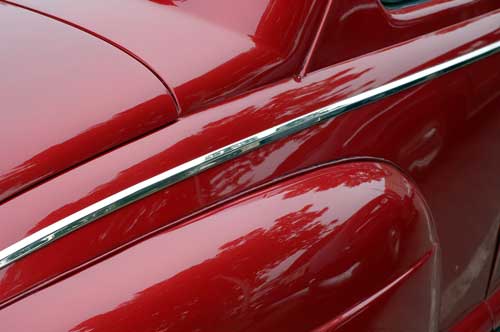The Process
Wash
The first step to a clean car, washing can be more complex than you think. Read more...
Clean
The key to a long lasting shine, propely cleaning your paint is a must. Read more...
Protect
Wax is your paint's protection from the elements. Get it right and your car will thank you. Read more...
Tires and Rubber Care
So your paint is taken care of, how about your tires and other rubber trim components? Read more...
Wheels
Brake dust sucks! Keeping your wheels clean can be a real chore without the right knowledge and products. Read more...
Engine Compartment
Don't neglect your engine compartment! A clean engine can make repairs and diagnosing leaks easier, plus it can help component last longer like hoses and belts. Read more...
Other Topics
Clean Your Paint
How to properly clean your car's paint

More than a wash, the paint cleaning process is something that should be done a few times in your car's lifetime. How often depends on if you keep your car in the garage, environmental conditions and how often you wash and wax it. Garage kept cars can get away with every year or two, daily drivers parked outside in the elements could need cleaning every 6 months to a year depending on how picky you are.
Let's define paint cleaning... first what it is not, which is washing. Washing your car is basically removing the top layer of dirt which sits on top of the outer coating of wax you applied the last time you waxed your pride and joy. Over time dirt and particle of rail dust and other nasty stuff gets embedded deeper in your paint, or more accurately the clear coat. Most modern paints are a thin base layer of color and a top coat of thicker clear coat which adds the shine to the finish. This top clear coat is actually what you will be cleaning, and takes the most abuse.
Where to start? First you need to wash your car, using your favorite car wash. Next make sure you are in a shady area away from direct sunlight as excess heat from the sun can cause cleaners and polishes to dry up and become ineffective.
Once you have your car as clean as possible, it's time to start really cleaning your paint. Rule of thumb, start off as gentle as possible and use the least aggressive product that gets the job done. Let's look at the products available to clean your paint going from most aggressive to least...
- Compound: The most aggressive method of removing contaminants and swirl marks from your paint, compound was really designed for older single stage paints where a deeper cutting action was needed to level out orange peel and get a good base surface to begin polishing. I would not recommend a compound for most jobs, and only ever as a last resort if you know what you are doing.
- Clay Bar: Another way of removing contaminates and smoothing the surface, a clay bar will literally lift the dirt out of the clear coat layer. You can find clay bar kits at most auto parts stores, which include a lubricant which must be used to keep things gliding smoothly across the surface of your paint. A major word of caution: If you do not constantly kneed/fold the clay bar, exposing a fresh surface, and burying the dirt you just lifted off your paint, you will end up scratching the clear coat and doing more harm than good!
- Glaze: A finer "grit" than compound, glaze will remove most swirl marks and level the paint surface leaving it ready for a good polish and wax.
- Polish: The least aggressive way to clean your paint, polishes will not take out swirl marks or correct other damage, but if your paint is in good condition it will be great at providing a smooth deep look for your paint. If I am using a glaze, I like to finish with a polish for the best shine.
So now you know the major players in cleaning your paint let's talk about application. You want to always use 100% cotton towels when applying and removing compounds, glazes and polishes. Microfiber is best, but a high quality 100% cotton towel from a company you trust is fine. I have seen cheap 100% cotton towels which were NOT 100% and caused scratches in the paint I was working on. Don't skimp when it comes to towels! When they get dirty wash in the washing machine like you would your clothing, but skip the fabric softener or dryer sheets as they leave a residue which will show up during your next polish/wax job.
A word about buffers... For experienced operators, a mechanical buffer or polisher can be a great tool. For the novice, it's a recipe for disaster. If you must, run with a dual action or random orbital polisher. The aggressive rotary polishers are only suited for professionals and can burn through your paint quicker than a blink of your eye. >>> More information on choosing a car polisher.
So your car is washed, dry, and in the shade, now is the time to start with the least aggressive of the products mentioned above. Most cars will be fine with a simple polish, but if your car has swirl marks you may want to start with a glaze. Work in small areas, apply medium pressure and allow the liquid to do the work. Follow the directions on the product and buff to a shine. Once you have the desired smooth surface and deep shine, add a layer of wax to protect the finish.